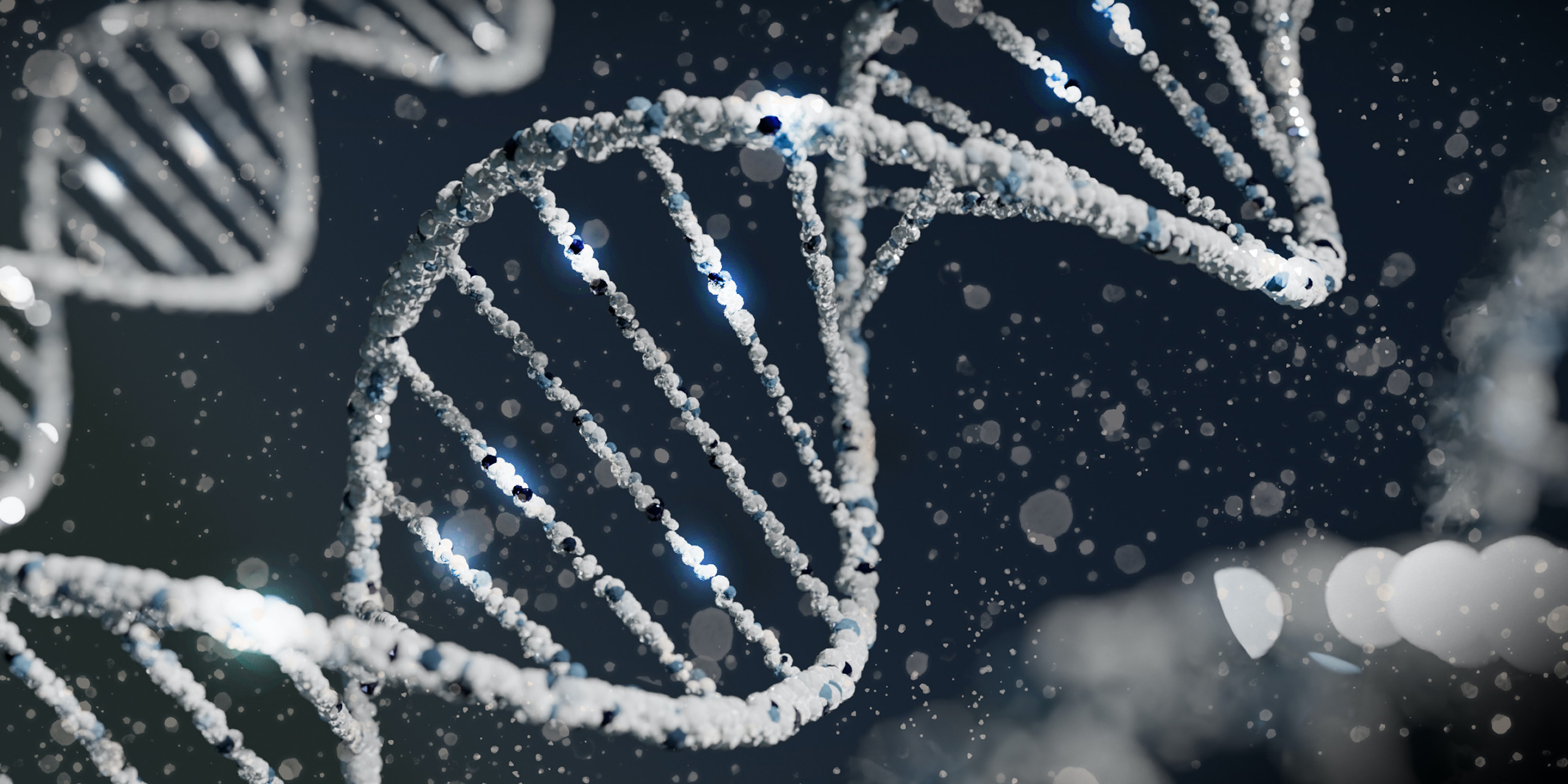Originally published 4 September 2005
I can’t remember the first time I heard it said that there is an arm’s length of DNA in every cell of our bodies, but I am certain that I blinked with disbelief. How can an arm’s length of anything fit into a microscopically small volume?
I heard that statement many times over the years — I have repeated it myself — and always at the back of my mind there was a lingering doubt: Surely not possible.
Finally, as readers of Skeptics and True Believers will know, I did the math. We know from X‑ray diffraction studies that a strand of DNA is 1.5 nanometers in radius. Assume a cylinder 1 meter long with a radius of 1.5 nanometers and work out the volume. A typical animal cell is about 8 micrometers in radius. Assume a spherical cell and calculate the volume. You will see that the arm’s length of DNA fits handily indeed.
A lovely illustration of the beauty of math, even simple grade-school geometry, as an aid to the imagination!
Here’s something else I once read that tested my credulity: The amount of DNA in my body, if stretched out end to end, would reach to the Sun and back 50 times.
Again, a quick calculation makes the impossible real. A meter or so of DNA in each of, oh say, ten trillion cells. Punch it into your calculator and you are off to the Sun and back — again, and again, and again.
Here is an analogy I worked out that helps get the mind around these seeming impossibilities: Imagine the human DNA as a strand of ordinary sewing thread.
On this scale, the DNA in the 23 pairs of chromosomes in a typical human cell would be about 150 miles long, with about 600 nucleotide pairs per inch. That is, the DNA in a single cell is equivalent to 1000 spools of sewing thread. This represents two copies of the genetic code.
Take all that thread — the 1000 spools worth — and crumple it into 46 wads (the chromosomes). Stuff the wads into a shoe box (the cell nucleus) along with — oh, say enough chicken-noodle soup to fill the box. Toss the shoe box into a steamer trunk (the cell), and fill the rest of the trunk with more soup.
Take the steamer trunk with its contents and shrink it down to an invisibly small object, smaller than the point of a pin. Multiply that tiny object by ten trillion and you have the cells of the human body, each with its full complement of DNA.
Got that?
Now here comes the really astonishing part.
All that DNA — those hundreds of trillions of wads of thread — is not just sitting there, static. As you read this essay, a flurry of activity is going on in every cell of your body.
Tiny protein-based “motors” crawl along the strands of DNA, transcribing the code into single-strand RNA molecules, which in turn provide the templates for building the proteins that build and maintain our bodies. Other proteins help pack DNA neatly into the nuclei of cells and maintain the tidy chromosome structures. Still other protein-based “motors” are busily at work untying knots that form in DNA as it is unpacked in the nucleus and copied during cell division. Others are in charge of quality control, checking for accuracy and repairing errors.
Working, spinning, ceaselessly weaving, winding, unwinding, patching, repairing — each cell like a bustling factory of a thousand workers. Ten trillion cells humming with the business of life.
Can we believe it? You bet.
My son-in-law, a mechanical engineer, works for a company inventing new ways to handle DNA. I am amazed by the things they do with DNA — stretch, snip, measure forces, feed though specially designed diagnostic chips — all this on a scale that is invisibly small. And of course we have recently witnessed the complete transcription of the human genome — a listing of the 3 billion nucleotide pairs that are the guiding code of a human life — one of the great milestones in the history of science.
Mention this stuff to many people and their eyes glaze over with boredom. Yet they are quick to believe in horoscopes, ESP, alien abductions, Loch Ness monsters, body auras, UFOs, reincarnation, ghosts, angels, out-of-body experiences, miraculous cures, homeopathy, psychokinesis, etc., etc., for none of which is there a shred of non-anecdotal, consistently reproducible evidence that is available to believers and skeptics alike.
Mostly, I think, we tend to believe those things that give us a sense of empowerment over our bodies, or a sense of being somehow the focus of cosmic attentions. Meanwhile, the real mystery and wonder and beauty of the world goes by the board. What was that thought by Tim Robinson I mentioned in a post the other day? The so-called miracles are explainable. It’s the explanations that are miraculous.



